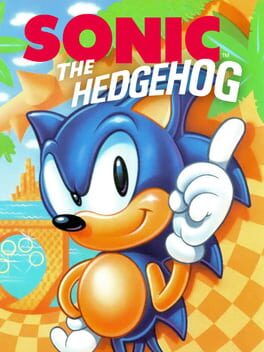Review Details

Description
Sonic the Hedgehog was one of the games adapted for release in arcades for the Mega Play hardware. While the Mega-Tech version is largely the same game as the original, the Mega Play version has lots of gameplay differences.

Review
Sonic the Hedgehog burst onto the gaming scene in 1991, quickly establishing itself as a defining platformer of the era and an enduring mascot for Sega. With its eye-catching blue protagonist, lightning-fast gameplay, and memorable chiptune soundtrack, the original Sonic title brought a distinct personality to the 16-bit console wars. The game's design philosophy challenged the conventions set by contemporaries like Super Mario Bros., offering sprawling, momentum-driven levels that encouraged speed and fluid movement over methodical platforming.
Graphically, Sonic the Hedgehog was a tour de force for its time. The vibrant color palette, loop-de-loops, and backgrounds bursting with life gave the Green Hill Zone and subsequent stages their own unique identity. The animation of Sonic himself was smooth, reinforcing the sense of velocity that became a series trademark. Coupled with iconic sound effects and an instantly recognizable soundtrack composed by Masato Nakamura, every zone came alive with an energetic charm that continues to inspire both nostalgia and admiration.
Gameplay remains at the heart of Sonic’s appeal. While early levels like Green Hill Zone are forgiving, providing room to build up speed and rewarding exploration, later stages introduce more intricate hazards and precise platforming challenges. The balance between speed and risk makes for an exhilarating yet sometimes frustrating experience, particularly for newcomers. Collecting rings, searching for hidden paths, and defeating the evil Dr. Robotnik’s contraptions are as satisfying now as they were decades ago, though the unforgiving lack of save points in the original can feel punishing by modern standards.
Sonic’s character design and attitude were deliberate moves to differentiate him from industry rivals. With his confident smirk and unrelenting pace, Sonic brought a ‘90s edginess that appealed to a younger audience. This charisma is matched by rivalries, notably with Dr. Robotnik (or Eggman), and is complemented by simple, almost universally understood controls that let anyone pick up and play. However, the game’s heavy reliance on memorization for later stages and occasional slowdown during fast sequences can detract slightly from the smooth flow.
The legacy of Sonic the Hedgehog cannot be overstated. It paved the way for multiple sequels, spinoffs, and adaptations across several media. More importantly, it left an indelible mark on how platformers could emphasize speed and expression over careful precision. While modern re-releases and remasters have addressed some of the original’s rough edges—adding save functions and quality-of-life improvements—the core experience remains thrilling, capturing the same sense of wonder and excitement as it did in the early ‘90s.
In conclusion, Sonic the Hedgehog’s debut is a classic that still resonates with players both old and new. Though not without its challenges—namely, the sharp difficulty curve and relics of early game design—it stands as a testament to Sega’s innovation and willingness to take risks. The game combines kinetic energy, vibrant visuals, and an unforgettable soundtrack into a truly iconic package. Even over thirty years later, zipping through loop-de-loops with Sonic feels just as exhilarating, reminding us why this blue blur became a legend in the video game world.


